History is not was, it is.
William faulkner
Comfort and surrounding areas are rich with History and Historical markers abound. Several can be see on our home page. Below are a few more. For a complete listing of Historical Markets in the Comfort area visit the Historical Marker database - https://www.hmdb.org/ .
Comfort

Otto Brinkman House
Marker #3882 - 1976 The cottage was built in 1860 by German-born Otto Brinkmann (1832-1915), who lived here with his brothers until he married Marie Johanne Ochse in 1867. The half-timbered walls filled with native stone display the "fachwerk" technique introduced in Texas by German immigrants. The structure was enlarged in 1879, when the owner was Brinkmann's mother-in-law, Mrs. Julius Ochse. The house was purchased in 1973 and restored by Mr. and Mrs. William E. Parrish. Recorded Texas Historic Landmark - 1976
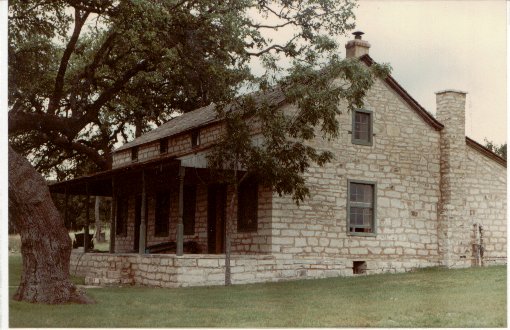
Ferdinand Hohenberger Farmstead
Marker #1589 - 1986 Ferdinand Hohenberger (ca. 1813-1895), with his wife Katherine Schultze and their family, left Bremen, Germany in 1855. Arriving in Galveston on November 20 after a 73-day ocean voyage, they first settled in Luckenbach (approx. 10 mi. NE). The family relocated to this area and purchased this property in 1871. Hohenberger and his family engaged in farming, and he also became a freight driver, traveling between San Antonio and Indianola on the Texas coast. In 1882, Ferdinand deeded 160 acres of land to each of his sons, William and Theodor. This property was part of the land deeded to William Hohenberger. He and his family lived here until 1914, and William operated a store and post office from one of the buildings on the homestead. He died in 1932 at age 82. The property remained in the Hohenberger family until 1915. Four undated gravestones on the farmstead mark the burials of family members. In addition to the graves of Ferdinand and Katherine Schultze Hohenberger are the interments of Mrs. Reichenthin and Mrs. Hagelman, believed to be sisters of Katherine Hohenberger. (from Comfort take FM 473 E about 4 miles - turn N on Old No. 9 Highway and continue about 9 miles to house, 1010 Old No. 9 Highway)
The homestead is comprised of four rock buildings built between 1871 and 1882 with one addition. Rock was from property; Kiln in rear of property.
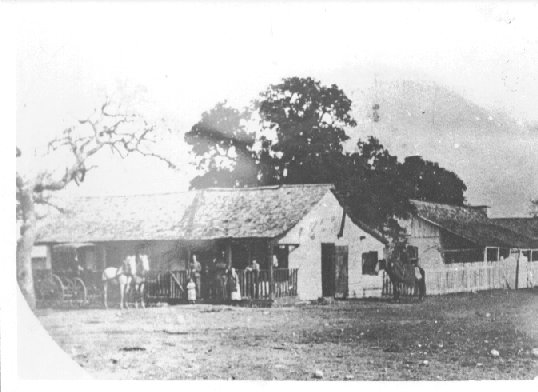
Faltin Homestead
Marker #1564 - 1962 German native Theodor Georg Ludwig Goldbeck constructed the original part of this home in 1854, the same year the town of Comfort was founded. In 1856 he sold the house and his mercantile business to Friedrich August Faltin, a merchant who had recently migrated from Prussia. Additions to the residence, completed during his ownership, reflect German influences of pioneer building techniques. For over 125 years it has remained in the Faltin family. Recorded Texas Historic Landmark - 1981 (Main and Seventh Street, Comfort)
Certainly one of the oldest dwellings in its original location in Comfort, this cabin was built by Fritz and Theodore Goldbeck in 1854. The Goldbeck's operated Comfort's first mercantile store. Fritz also wrote poetry about the early life of German pioneers in Texas and published them as "Seit Funfzig Jahren" ("Since Fifty Years").
In 1856 August F. Faltin, with his wife, Clara Below, bought the cabin from the Goldbeck's when the brothers wanted to return to San Antonio. The log portion was extended with the fachwerk addition. The cabin has been restored by August Faltin III, a great- grandson of the 1856 immigrant. The August Faltin House was designated Texas Historical Landmark in 1981.
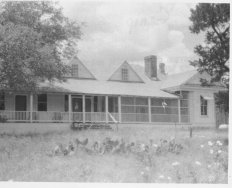
Idlewilde Lodge
Marker #2615 - 1983 Built in 1902 of Texas long leaf yellow pine with cypress siding and millwork, this structure was first used as a spa by Dr. C. H. Wilkinson of Galveston. In 1906 the property was sold to E. Hugo, who operated "Camp Reliance" here until 1912 when Robert Wilke acquired the land and adopted the name "Camp Good Times". The building was bought by the YWCA in 1918 and served as the main lodge for "Camp Idlewilde", a girls' summer camp, for more than 60 years. (from Comfort, take FM 473 about 1.5 miles E - turn S onto road to lodge, about .5 mile to site)
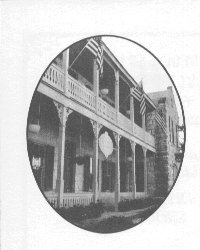
Ingenhuett-Faust Hotel
Marker #2646 - 1985 The older section of this hotel, with its jig-cut brackets and balustrade, was built in 1880. Additional facilities were constructed in 1894, seven years after the coming of the railroad to Comfort. Both sections of the inn were designed by Alfred Giles of San Antonio. Members of the Peter Ingenhuett family operated the hotel until about 1903. It was owned and managed by Louis and Matilda Faust from 1909 until 1946.
This building, designed by Alfred Giles, was originally a 3-room building built in 1880 for Peter Joseph Ingenhuett. The west parlor wing was added in 1894. The hotel was operated until 1893 by Charles Karger who was a brother to Mrs. Peter J. Ingenhuett. Then the hotel was run by Ernst Ingenhuett, a son of the Peter Ingenhuett's. Ernst ran the hotel for about 10 years during which time his family lived there for a while. In 1894, the building was enlarged to 18 rooms.
In 1909 Louis and Mathilda Faust purchased the hotel. They operated it until 1946. After that the building fell into decline. It was in the 1980's that Dr. and Mrs. Bob Potter acquired the building. They restored it and it again became an attractive operating business with antiques and "Bed and Breakfast" accommodations.
This building was designated as Texas Historical Landmark in 1985.

Ingenhuett-Karger Saloon
Marker #15937 - 2009

Paul Ingenhuett Home
Marker #3956 - 1979 Young Paul Ingenhuett (b. 1868), born on this block, succeeded his father Peter Joseph in the mercantile business. Soon Paul expanded into farming, sheep and cattle ranching, and helped found Comfort State Bank. In 1891 he married Ida Emma Sophie Flach and they had four children. After noted architect Alfred Giles designed several Comfort buildings, the Ingenhuetts employed him in 1897 to draw plans for this home. The limestone was quarried on family property.
One story "H" shaped native limestone quarried locally.

Peter Joseph Ingenhuett Homestead
Marker #3996 - 1986 German immigrant Peter Joseph Ingenhuett (1833-1923) came to Texas and settled on a farm near Comfort in the 1850s. In 1861, he married Marie Karger (1843-1913), and they moved into town in 1867. The Ingenhuetts opened various businesses along what is now High Street, including a hotel, saloon, and livery stable. Ingenhuett served for nearly 25 years as the Comfort postmaster. The small cottage at the back of this property was the Ingenhuett home until the larger dwelling at this site was built in 1888.
The homestead has two buildings involved. The 1863 cabin behind the big house was a home, a wash house, storage room, taxidery shop, garage and antique shop. It has fachwerk and outside stairs. The 1888 house is a one story, German Victorian limestone with gingerbread on porch.
The original (1863) Peter Joseph Ingenhuett Homestead was located behind the later house. This cabin served as the Ingenhuett's home until they moved into the second floor of the "new" mercantile store building in 1880. In addition to a residence, the cabin has also served many other purposes. It was a wash house with inside hearth, a storage building, a taxidermy shop (when owned by Udo Letz) a garage, and an antique shop (which the Meyer's operated).
The larger house was built in 1888 for Peter Joseph and Marie Karger Ingenhuett. Mr. Ingenhuett was a prominent businessman in the community who built several businesses along High Street including the hotel, saloon, and the Ingenhuett Store.
The house originally had clapboard siding. The stucco exterior was added in the first half of this century to improve the fire resistance as several fires had occurred in the vicinity. The house was renovated in the early 1970s with turned balusters and a new fretwork design being installed on the front porch. It was purchased in 1986 by Bill and Helen Meyer. Working from old photographs, the Meyers replaced the balusters and fretwork design in 1991 to more nearly approximate that of the original construction. The stairway in the central hall, giving access to the expanded attic, was moved from the Ingenhuett-Faust Hotel.
The Homestead received a Texas Historical Marker in 1985.

Rice Home
Marker #15626 - 1965 There are three buildings on this complex. The first was a two room log cabin. Using trees growing on nearby Cypress Creek, the log portion of this house was built in 1857 by Emil Serger a master cabinet maker. He was soon joined by his friend, Paul Hanisch, a pharmacist. Two rooms were added to house the first pharmacy in Comfort.
Mr. Hanisch married and moved, then Mr. Serger married, making a larger house a necessity. The two story "Sunday House" was built between 1870 and 1885. The three parts were connected with hallways or breezeways. There is a one story gallery across the front.
Mr. and Mrs. J. C. Rice, interim owners, were commended by the San Antonio Conservation Society for their restoration of the property. The next owners were Mr and Mrs. John T. Steen. This house was designated a Recorded Texas Historical Landmark in 1965.
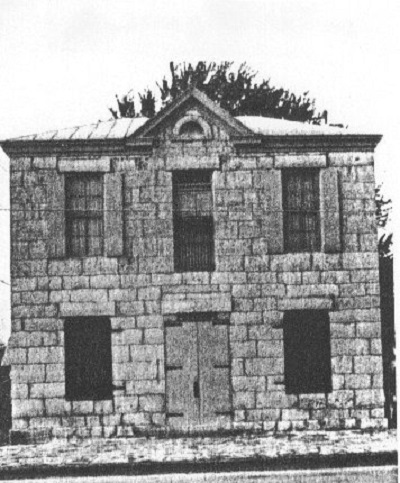
The Gass Schmiede
Marker #5343 - 1986 This limestone-block building was built in 1890 as a blacksmith shop ("schmiede") for Jacob Gass (1845-1913). Rock mason J. Gottlieb Lorbeer worked on the lower level for almost a year, walking to the job each week from Sisterdale (5 mi. E). The upper level was finished quickly with machinery and was used as a residence. Paul Ingenhuett bought the building in 1903, and his family made it available for a museum and public library in 1932. (8th and High Streets, Comfort)
The limestone-block building was built by J. Gottlieb Lorbeer as a blacksmith shop in 1890. The rock mason worked on the lower level for almost a year, walking to the job each week from Sisterdale (15 miles). The upper level was finished quickly with machinery and was used by Jacob Gass as a residence.
In 1903, Paul Ingenhuett bought the building and used it for storage in connection with his general store next door. The Members of the Literary Social Club, with the able help of Mrs. Paul Ingenhuett, converted the building for use as a private museum in 1933. Her daughter, Paula Ingenhuett, continued to make it available as a museum. For many years it was opened each Saturday by Mr. and Mrs. Guido Ransleben. He is the author of "A Hundred Years of Comfort in Texas". This building was designated as Texas Historical Landmark in 1986.
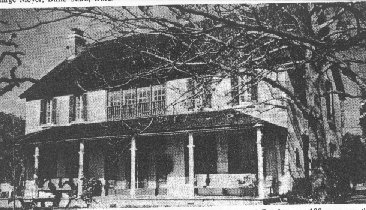
Stieler Ranch House
Marker #5120 - 1970 Designed and built 1890-1892 by Herman Stieler, German rock mason and local sheep rancher. He came from Germany; hauled freight for Charles Schreiner Company and to Camp Verde. Made this place a shearing station for fellow ranchers. Coaches from nearby stage line often stopped for food, repairs. Style is typical of era. Each floor has two rooms on either side of central "dog trot" hall. Interior was remodeled in 1937. (at site, U.S. 87, 6 mile N of Comfort, Texas)
Sisterdale
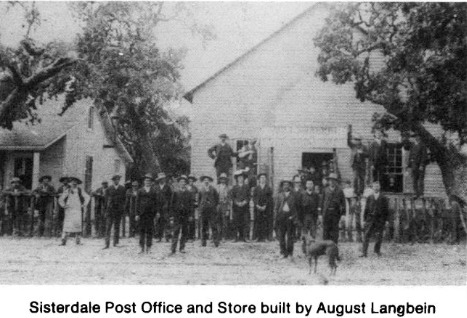
The Beginnings of Sisterdale
Nicolaus Zink was the 1st settler in Kendall County. His community in the idyllic valley of Sister Creek became one of the famous `Latin Settlements`. The leader of these free-thinking farmers was Ottomar von Behr and the circle included, Ernst Kapp, August Siemering, Julius Dresel, Gustav Theisen, and Edward Degener.
Waring

Waring School
Marker #5719 - 1986 Anglo pioneers in a predominantly German-settled area built the west wing of this building in 1891. Land for this first public school was given by Robert Percival Maxwell Waring, a native of Ireland for whom the town had been named in 1888. Citizens volunteered labor, funds, and materials for the building, and paid their children's tuition of $1 to $1.50 per month. The east wing was added in 1903, and exterior braces were applied in the 1930s. The school closed in 1954. (108 Avenue, Waring - from Comfort take IH-10 2 miles S, then FM 1621 5 miles E to Waring).
Some years there was a shortage of money to pay the teachers, so a tuition fee was paid for each pupil. Some years it was one dollar a month, or some $1.50, and that was hard on large families at times. Teachers' pay varied, too, from maybe $50.00 to $100.00 a month or more. Some years there were two teachers, depending on the number of pupils. New settlers were coming to Waring, and that brought more children. The railroad had its section hands headquartered in Waring so there were always some Mexican children in school. At times there were as many as 60 or 70 pupils attending school. Some of the early families were: Zoeller, Treiber, Waring, Nowlin, Manning, Stribling, Haufler, Geisler, Willie, Offer, Nichol, Bierschwale, Insall, Quigley, Safford, Cravey, Stanfield, Uecker, Fischer, Edwards, Rust, Meckel, Wray, Domeier, Marshall, McAlpine, McNutt, Dart, Brown, Jess, Hennings, Leidl, Voight, Wollschlaeger, Strube, Tomlinson, Grullimund, Blaschke, Poehnert and others. Listed below are some of the teachers that taught in the Waring School through the years 1891 to 1955 when the school was consolidated with the Comfort Independent School District.
TEACHERS: Miss Agnes Robinson, later Mrs. R.P.M. Waring, was the first teacher and taught for several years. | Mr. and Mrs. William Lee, 1903. He passed away later that year and is buried in the Bend Cemetery. | L.A. Koenig and Mary Norris, 1903. | M.C.F. Schmidt and Ethel Weld, 1907. | Prof. Wertheim and daughter, Rosie, 1908, 1909. | Emil Hopf and Miss Tiner, 1912. | Henry Hopf and Frankie Flack, 1915. | Rose Thompson and Frankie Flack, 1916. | Miss dilly Rumsey and Ruth Newton, 1915. | Augusta Gaines and Ella Zoeller, 1916. | Marguerite McFarland and Ella Esser, 1917. | Mr. and Mrs. Ashmore Cowles had a private school at this time, but he taught in the Waring school at another time also. They had 29 pupils in their private school in 1918. | Danny Ramft (Vogt) and Mrs. Welch, 1921 | Miss Willhelm and Mrs. Jake Insall, 1922. | J.H. Armstrong and Danny Ramft Vogt, 1923. | J.H. Armstrong and Mrs. Baughman, 1924. | J.H. Armstrong and Sophie Wenzel, 1925. | Morris Goforth and Norma George, 1926. | R.E. Cottingham and Helen Kutz, 1927. | H.K. Clump and Mrs. Paul Wendler, 1928. | Noel Browning and Eva Rechenthin, 1929. | James Seay and Eva Rechenthin, 1930. | Anita Elsik and Mrs. Paul Wendler, 1932. | Mrs. Mina Adams and Mrs. Paul Wendler, 1933. | Mrs. Mina Adams and Mrs. Truitt, 1934-1935. | Harold Ranzau and Nanny Maud Sommerville, 1936. | Mrs. Buena Lea Sutton, 1939-1944. | Beulah White, 1946. | Lucille Dills, 1947. | Mrs. Walker, 1948. | Odis Strube Hohmann, 1949-1954, the last teacher.
The building is still used as a community center.
Welfare
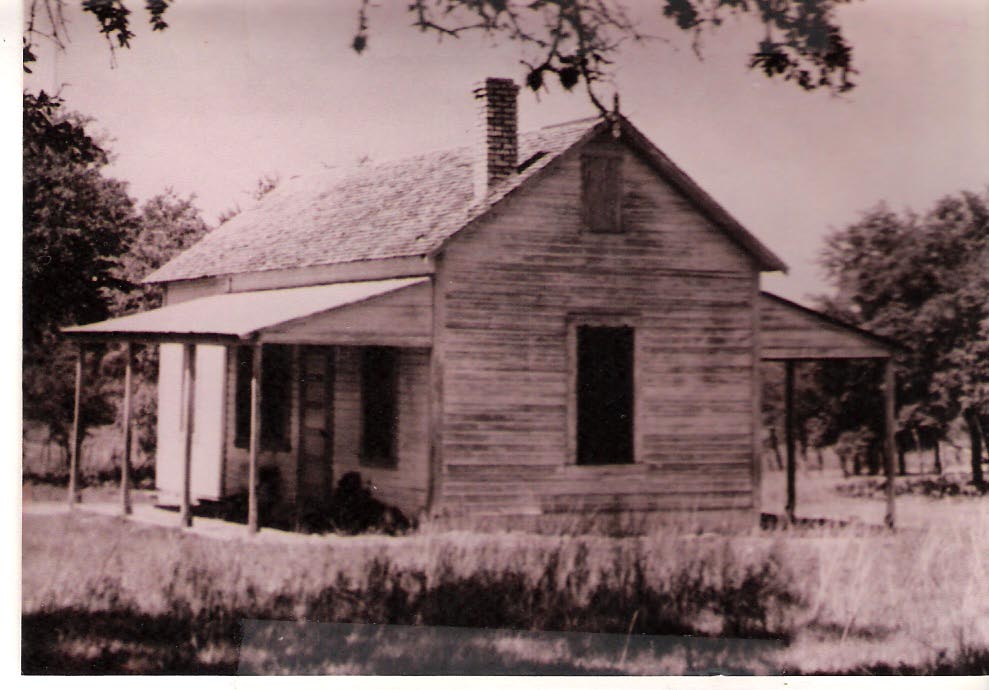
Welfare School
Marker #12370 - 2000 Built as a one-teacher school about 1878 to serve the rural Welfare community near Comfort, this building originally was located on the west side of Joshua Creek. It was moved to this site about 1902. After 1907, separate classes were held for African American students. About 1912, parents contributed funds to the erection of an addition and porch. Enrollment peaked at 25 in 1916. The structure served as a school until 1952, when students were transferred to Comfort. The single-room, wood frame structure with a stone foundation and shed roof porches is a vivid reminder of the heritage of rural Texas schools.
The town itself - once known as Bonton, the original name of the 1875 post office, it was changed to Welfare in 1880, possibly for the German word Wohlfarht, meaning pleasant trip. Carl Phillip Beseler was area`s first postmaster: serving Bonton and then as the first postmaster for Welfare.
